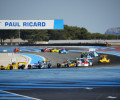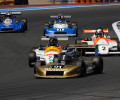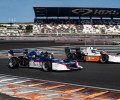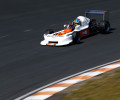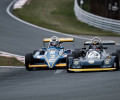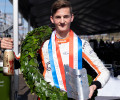Historic F3 - A highly successful launch
A new competition in the series of FIA Historic Championships, the FIA Historic F3 European Cup, passed its opening test with flying colours at Zandvoort, with 30 cars on the starting line, a wide range of chassis makes and engines and eight nationalities represented among the drivers. Victory honours went to the Dane Christian Olsen in Category 2, and the German Marcel Biehl in Category 1
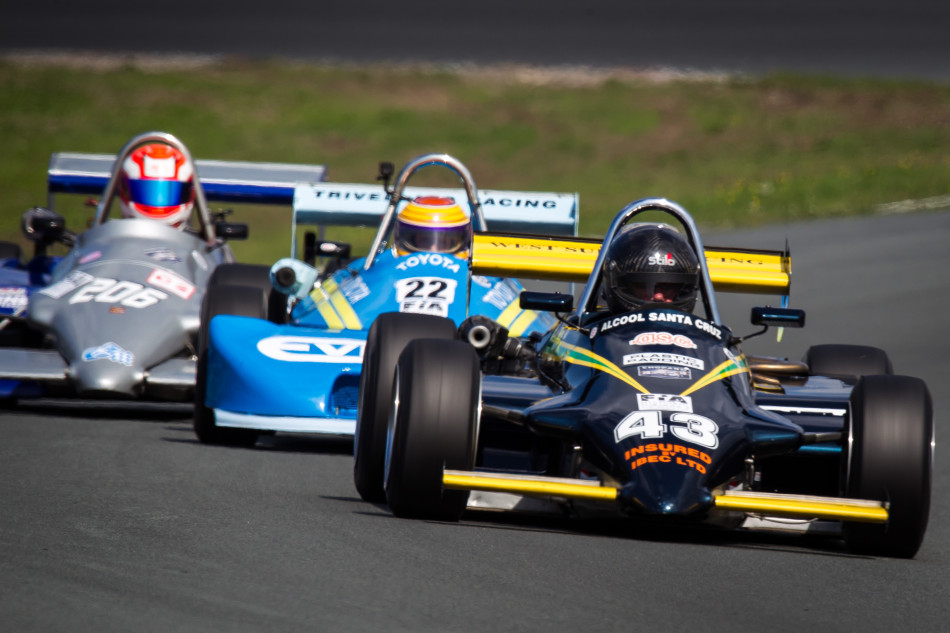
A key stepping-stone in the career of many famous Formula 1 drivers, Formula 3 has not solely been an international category throughout its lifetime. Indeed, at its peak, Formula 3 also included many national championships and the cars from Formula 3 – as is still the case today – were regularly involved in hill climb events. The number of cars produced and available is such that several national series reserved for historic Formula 3 are held throughout Europe, be they in Germany, France, Italy or the United Kingdom. The idea of enabling all the lucky owner-drivers of these single seaters from 1971 to 1984 to celebrate the category in an FIA Cup emerged, and very quickly gained followers. The choice of the Zandvoort circuit for this first historic F3 festival was almost compulsory, given that this Dutch circuit, squeezed between the North Sea and sand dunes, has a strong history with this category, including the legendary Masters of Formula 3 and other various rounds of the European championship that it has hosted.
The large crowd at the very popular Zandvoort Historic Grand Prix had the opportunity to see a return to action of cars from Ralt, Martini, Chevron, Argo, Brabham, Safir and GRD, including some which had in the past assisted Ayrton Senna, Gerhard Berger, Martin Brundle and Ricardo Patrese in their breakthrough to Formula 1. Of all the nationalities represented at this Historic Cup, Germany had the highest number of drivers, with nine on the starting grid, lined up against seven Britons, four French, four Italian, two Monegasques, two Danes, one Belgian, and one Luxembourger.
After making reconnaissance laps in the rain during free practice, during which the young Dane Christian Olsen (23 years old) stood out for his talent, the competitors went on to the qualifying stage followed by the two races under sunshine and on a dry track. Out of 30 drivers entered, 29 took on the time trials, while the German Daniel Hornung had to withdraw after free practice due to clutch problems. Christian Olsen once again positioned his Martini MK39 at the top of the leader board, four tenths of a second ahead of the Ralt RT3 driven by the German Thomas Warken, the Martini MK31 driven by Frenchman Frederic Rouvier, the ex-Tassin Argo JM6 driven by Briton Tom Bradshaw, the March 783 driven by Monegasque Valerio Leone and the Ralt RT3 driven by the Italian Davide Leone. In total, six drivers of different nationalities and five different makes of chassis in the top 6! Naturally, the most recent single-seaters from Category 2 (1979 to 1984) were the quickest, and monopolised the top four spots. Leone and his March 783 placed first in Category 1 (cars from 1971 to 1978), ahead of the Ralt RT1 of the German Marcel Biehl and the Brabham BT41 driven by Frenchman David Caussanel.
Held on the Saturday, Race 1 was to be contested over two parts, following the intervention of the Safety Car mid-race, to enable cars that had stopped at the edge of the track to be removed. While Bradshaw encountered a slew of problems with his gearbox linkage from the first lap, the race rapidly took the form of a duel between the German Thomas Warken and Christian Olsen, the former maintaining the advantage up to the midpoint, until being forced to yield to the Dane. At the end of a well-run race, the German Marcel Biehl succeeded in getting his Category 1 Ralt on the podium. Second at the end of the first lap, Valerio Leone then dropped back to third place, before being let down by the return spring of his accelerator pedal.
Race 2 on Sunday would produce a similar scenario, with a tight battle between Warken and Olsen. Leading from the start, the German relinquished the lead to the Dane in the third lap and the two drivers remained wheel-to-wheel. But on the eleventh lap, catching up with a back marker, Warken caused a shunt, which required the race to be red-flagged. While the stewards penalised the German with disqualification for his behaviour, Olsen was declared the winner of Race 2, and at the same time, of the European Cup, after the times from Races 1 and 2 had been totalled.
In the overall classification for Category 2, Olsen led the Briton Bradshaw, who succeeded in putting paid to his woes in Race 1 and the Frenchman Frederic Rouvier. In Category 1, the Briton Andrew Haddon in his ex-Patrese Chevron B34, took Race 2, but over the two races ceded victory to the German Biehl with a gap of less than three seconds. Patrick Gormley and his rare Safir RJ-03 completed the final podium standings in Category 1.
To consult the FIA Historic Formula 3 European Cup final classifications, click here.
To see the photos from the FIA Historic Formula 3 European Cup, click here.

 Facebook
Facebook Twitter
Twitter